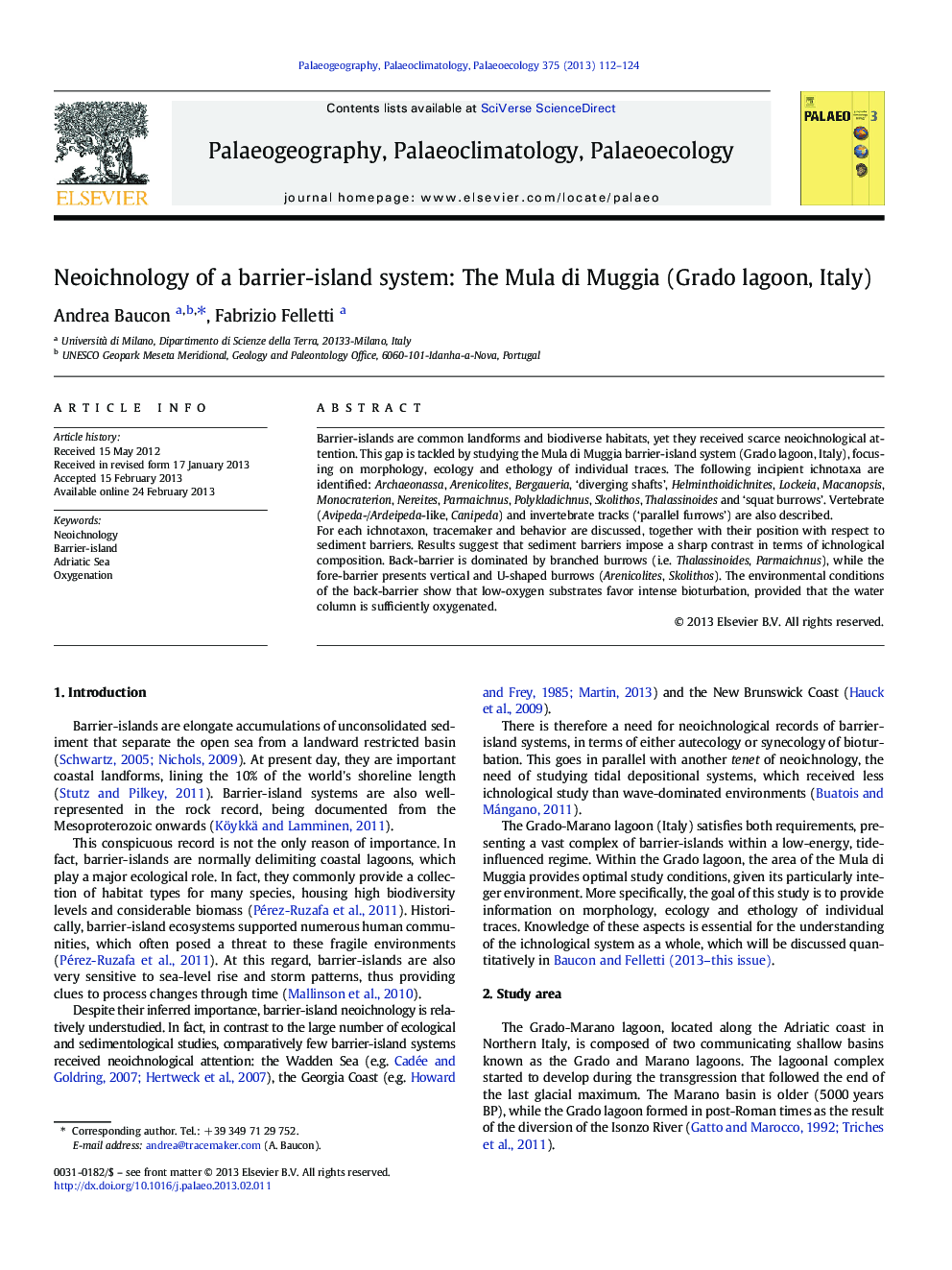| Article ID | Journal | Published Year | Pages | File Type |
|---|---|---|---|---|
| 4466659 | Palaeogeography, Palaeoclimatology, Palaeoecology | 2013 | 13 Pages |
Barrier-islands are common landforms and biodiverse habitats, yet they received scarce neoichnological attention. This gap is tackled by studying the Mula di Muggia barrier-island system (Grado lagoon, Italy), focusing on morphology, ecology and ethology of individual traces. The following incipient ichnotaxa are identified: Archaeonassa, Arenicolites, Bergaueria, ‘diverging shafts’, Helminthoidichnites, Lockeia, Macanopsis, Monocraterion, Nereites, Parmaichnus, Polykladichnus, Skolithos, Thalassinoides and ‘squat burrows’. Vertebrate (Avipeda-/Ardeipeda-like, Canipeda) and invertebrate tracks (‘parallel furrows’) are also described.For each ichnotaxon, tracemaker and behavior are discussed, together with their position with respect to sediment barriers. Results suggest that sediment barriers impose a sharp contrast in terms of ichnological composition. Back-barrier is dominated by branched burrows (i.e. Thalassinoides, Parmaichnus), while the fore-barrier presents vertical and U-shaped burrows (Arenicolites, Skolithos). The environmental conditions of the back-barrier show that low-oxygen substrates favor intense bioturbation, provided that the water column is sufficiently oxygenated.
► Neoichnology of a barrier-island system is described. ► Sediment barriers mark different ichnological domains. ► If the water column is oxygenated, low-oxygen substrates favor intense bioturbation.
